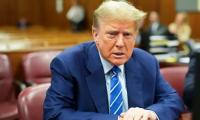Donald Trump made his opposition to much of America’s international trade policy a central theme in his presidential campaign, and his position almost certainly played a major role in his victory in key industrial states like Michigan, Ohio, and Pennsylvania. But the public now seems largely opposed to his recent tariffs against our major trading partners. It is possible to make sense of these seemingly contradictory facts.
First, most people are not policy wonks. They have day jobs and, when they get back from work, they often have family responsibilities, so getting the news means hearing a few tidbits on the television or radio, or possibly skimming an article in a newspaper or online.
This means that the vast majority of people only have the most general understanding of trade and trade policy. In the election of 2016, there was a widely held view that trade policy had hurt many people, which was why both Donald Trump and Hillary Clinton opposed the Trans-Pacific Partnership, the most important trade deal then on the table. (Trump pulled out of the deal shortly after his inauguration.)
People were not wrong to hold a negative view of trade policy: Over the prior four decades, it had put US manufacturing workers in direct competition with their low-paid counterparts in the developing world by reducing tariffs and other barriers that had caused foreign-made products to cost more. The predicted and actual effect of this policy was the loss of millions of manufacturing jobs.
Losing these jobs put downward pressure on the pay of less-educated workers more generally, as the workers who lost their jobs in manufacturing then sought out employment in retail, health care and other service sector industries. This was an important factor in the rise in inequality and the weakening of unions over the last four decades. A tariff is a tax, and tax increases are usually not popular.
While people could see and feel the pain that resulted from US trade policy overall, they are now not clear on what is to be gained from the tariffs Trump is imposing on imports from Canada, the European Union, China and other trading partners. A tariff is a tax, and tax increases are usually not popular. The immediate impact of tariffs is to raise the price of the goods on which they are imposed, and that has already happened for a variety of products. On items like washing machines, it has already led to a 13.1 percent increase over the last year in prices paid by consumers.
In intermediate goods, like steel, it has led to price increases for downstream industries, like the auto and appliance industry. The higher price is good news for steel producers, who are adding some jobs, but it is likely to cause jobs losses in other industries. In addition to the US taxing its own consumers for purchasing foreign-made goods, other countries are retaliating by imposing their own tariffs on US – made products. This is already hurting the prices of a number of agricultural crops and, as tariffs spread, many other industries might be hit as well.
While tariffs have real costs, they can be an effective tool in trade negotiations – if they are part of a well-worked out strategy to achieve specific goals. Unfortunately, Trump’s tariffs do not appear to be part of a carefully considered plan.
Instead, Trump has publicly lashed out at our trading partners over largely-imagined wrongs. For example, he complained to Canadian Prime Minister Justin Trudeau over his country’s large tariffs on US milk, but, imports to both the US and Canada are regulated by quotas, which allow dairy products to enter tariff-free.
This article has been excerpted from: ‘Why Are Trump’s Tariffs As Unpopular As Obama’s Trade Policies Was’
Courtesy: Counterpunch.com
As usual, any such deal, aiming to resuscitate ailing economy, brings to fore urge and resolve to halt further...
A representational showing sticky notes on a board. — Unsplash/FileThere are some common themes from the lives...
Whether the Daanish Schools effort has been able to live up to its principles or not may be debatable
According to the federal government, last year 653,100 people experienced homelessness on a single night in America
Another advantage for Pakistan is the enhanced teledensity and internet penetration
Both media spheres need to dovetail in amplifying the urgency of addressing climate change at the local, national, and...







